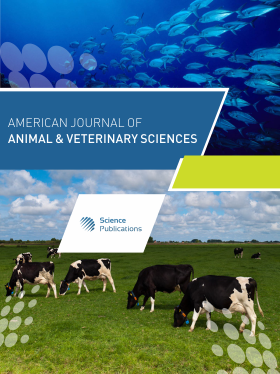Food Safety in the Production and Consumption of Fish: The Case of Vibrio Vulnificus
- 1 Consejo Nacional de Ciencia y Tecnología (CONACYT), Departamento de Ciencias de la Alimentación, Division de Ciencias Biológicas y de la Salud, Universidad Autónoma Metropolitana, Unidad Lerma, Lerma de Villada, Estado de Mexico, Mexico
- 2 Consejo Nacional de Ciencia y Tecnología (CONACYT), Unidad Nayarit del Centro de Investigaciones Biológicas del Noroeste (UNCIBNOR+), Tepic, Nayarit, Mexico
- 3 Departamentto de Ciencias de la Alimentación, Division de Ciencias Biológicas y de la Salud, Universidad Autónoma Metropolitana, Unidad Lerma, Lerma de Villada, Estado de Mexico, Mexico
- 4 Departamento de Ingeniería Bioquímica, Escuela Nacional de Ciencias Biológicas, Instituto Politécnico Nacional, Ciudad de Mexico, Mexico
- 5 Departamento Académico de Ingeniería en Pesquerıas, Universidad Autónoma de Baja California Sur, La Paz, Baja California Sur, Mexico
Abstract
Foodborne Diseases (FD) constitute a major global public healthchallenge due to their incidence and relatedmortality. Bacteria are frequently related to the generation of FD outbreaks.Fish is a highly nutritious food that is marketed and consumed globally.However, they are also susceptible to deterioration and contamination due to biologicalhazards related to unsanitary conditions and practices occurring throughout thefood chain. Vibrio vulnificus is considered a human pathogen related todiseases and is transmitted by manipulation and consumption of aquatic foods,mainly in the raw state. This microorganism is also a fish pathogen thatgenerates epizootics in culture with consequent economic losses and risks tohuman health due to transfer in the food chain. Aquaculture is a source of foodsuch as fish that has grown over the years, becoming an important form ofsubsistence worldwide. Tilapia is an aquaculture species that, depending onculture conditions, may be at risk of V. vulnificus infections thatwould generate negative effects on animal health and compromise food safety.Therefore, the purpose of this document is to provide a general perspective ondiseases transmitted by the food of aquatic origin derived from the handlingand consumption of fish, specifically tilapia and whose causal agent is V.vulnificus. The metabolic, ecological, isolation, and identificationcharacteristics of this pathogen are pointed out, in addition to the various actionsto control and prevent negative impacts on public health due to this biologicalhazard in foods of aquatic origin.
DOI: https://doi.org/10.3844/ajavsp.2022.239.257

- 4,281 Views
- 3,264 Downloads
- 0 Citations
Download
Keywords
- Aquaculture
- Fishing
- Food Pathogens
- Gastroenteritis
- Zoonoses
- Fish-Borne
- Tilapia
